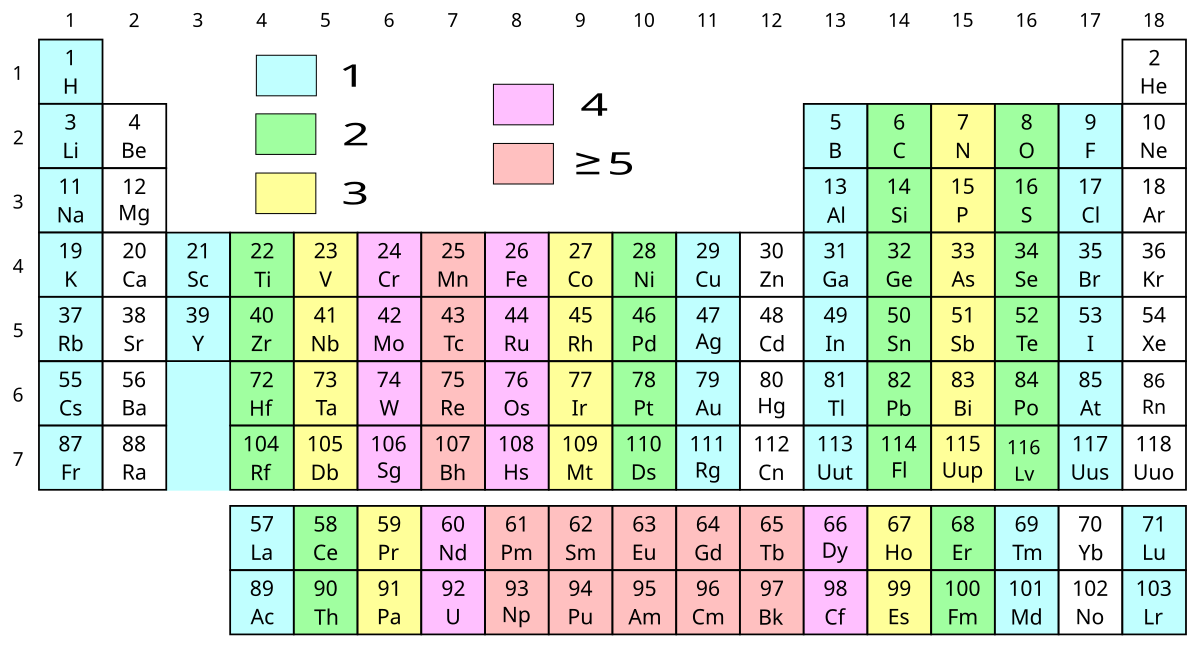- Heaviest Elements By Weight
- Heaviest Element On Earth
- Heaviest Elements List
- What Is The Heaviest Natural Element
- Heaviest Element In A Star
When you think ‘heavy’ things, schoolbags, handbags and shopping bags come to mind. Overheard every day at a shopping centre is: “What’s in here, lead weights?” as bags are handed over to the designated heavy lifter.
Lead is a stable metal that’s often used as weights and sinkers. The reason it’s heavy in terms of mass per unit volume (or think about it as per teaspoon), is because the lead atoms are very close, making it a dense material.
Uranium, which has 92 protons, is the heaviest element commonly found in nature, but scientists can artificially create heavier elements by adding protons into an atomic nucleus through nuclear. The heaviest element, in terms of atomic weight, is element 118 or oganesson. The element with the highest density is osmium or iridium. Density depends on temperature and crystal structure, so which element is most dense varies according to conditions. Heaviest Element in Terms of Atomic Weight. YThe heaviest element that occurs in large quantity is uranium (atomic number 92). You can mine it like gold. YTechnetium (atomic number 43) does not occur naturally. YPromethium (atomic number 61) does not occur naturally.
But the expression “it went down like a lead balloon” should probably be updated to “osmium balloon”. Osmium is one of the heaviest materials on earth, weighing twice as much as lead per teaspoon.
Osmium is a chemical element in the platinum group metals; it’s often used as alloys in electrical contacts and fountain pen nibs.
Heaviest Elements By Weight
Beyond Earth, the heaviest, most dense substance in the known universe would have to be the insides of a neutron star says Associate Professor Andrew Melatos from the University of Melbourne’s School of Physics.
“A teaspoon of neutron star would weigh around a billion tons,” Associate Professor Melatos says.
Heaviest Element On Earth
According to the NASA website, that’s about the same as Mt Everest.
The birth of a neutron star is essentially the collapse of a giant burnt out star, a sun that is 10 to 100 times bigger than our own sun. “As a giant sun burns out it uses up all its fuel. Gravity is then so strong it collapses in on itself.
“The pressure is so intense, it explodes into a spectacular Super Nova spewing gas everywhere. For a few seconds it outshines the other 100 billion stars in our galaxy.
“What’s left behind is a tightly packed ball of neutrons – a neutron star – which is about 30km across, roughly the size of Melbourne, but with the mass of a giant sun packed into it, so it’s insanely dense.”
Neutron stars’ high density means their gravity is strong and allows for the study of gravitational waves, providing clues to the fabric of space and time as predicted by Einstein in 1916. “But don’t panic, our sun won’t burn out for another five billion years,” he says.

“Our sun is a small star. It won’t become a neutron star, but it will burn up all the hydrogen and helium, and become a red giant. At that point our sun will gobble up surrounding planets including Earth, nuclear reaction will continue to transform helium into carbon and it will be like a giant Earth-sized diamond, at which point it is called a white dwarf.”
So massive stars become neutron stars – the heaviest things in the universe – and even more massive stars become black holes.
Banner Image: Pixabay
For an independent study course at my high school, I am researching the formation of the elements, both light and heavy. I have some basic understanding of how this is done, and I have also found some technical information that at this time I don't understand. Can you point me to some good articles on the topic, or perhaps cover some more advanced materials yourself?
The lightest elements (hydrogen, helium, deuterium, lithium) were produced in the Big Bang nucleosynthesis. According to the Big Bang theory, the temperatures in the early universe were so high that fusion reactions could take place. This resulted in the formation of light elements: hydrogen, deuterium, helium (two isotopes), lithium and trace amounts of beryllium.
Nuclear fusion in stars converts hydrogen into helium in all stars. In stars less massive than the Sun, this is the only reaction that takes place. In stars more massive than the Sun (but less massive than about 8 solar masses), further reactions that convert helium to carbon and oxygen take place in succesive stages of stellar evolution. In the very massive stars, the reaction chain continues to produce elements like silicon upto iron.

Elements higher than iron cannot be formed through fusion as one has to supply energy for the reaction to take place. However, we do see elements higher than iron around us. So how did these elements form? The answer is supernovae. In a supernova explosion, neutron capture reactions take place (this is not fusion), leading to the formation of heavy elements. This is the reason why it is said that most of the stuff that we see around us come from stars and supernovae (the heavy elements part). If you go into technical details, then there are two processes of neutron capture called rapid process (r-process) and the slow process (s-process), and these lead to formation of different elements.
For more details, refer the following websites:
Heaviest Elements List
1. Big Bang nucleosynthesis
What Is The Heaviest Natural Element
2. Fusion in stars like the Sun
Heaviest Element In A Star
3. s-process and r-process
This page was last updated June 27, 2015.
